Low-Pressure? No Problem: Diagnosing Water Woes from Source to Sink
Nothing disrupts a peaceful day like water woes, especially when that steady stream drops to a mere trickle.
Nothing disrupts a peaceful day like water woes, especially when that steady stream drops to a mere trickle. Fortunately, no mystery surrounds what causes low water pressure in a well system – and tackling these pressure problems requires a few expert tips and tricks to keep things flowing smoothly from source to sink. When identifying the causes of water pressure issues, each element of the well system plays a role, from the pump to the piping and even the power sources.
Low water pressure can stem from various sources, so the key is to approach each possibility systematically. Understanding the signs, symptoms, and possible solutions for low-pressure problems helps keep that water flowing, verifying a reliable and steady fresh water supply.
Pump Problems: When Pressure Falls Flat
The well pump is the heart of any well system. When issues arise here, expect water pressure to drop as well. An undersized pump or working harder than it should can easily cause a weak flow. A larger or stronger pump might be needed for homes with substantial water needs, such as those with multiple bathrooms or high-usage appliances. On the other hand, a pump that’s too large can also cause pressure problems if the tank isn’t sized correctly to accommodate it.
In some cases, pump issues can be traced back to electrical concerns. Fluctuations in power, a tripped breaker, or even worn-out electrical wiring can lead to pump failure or inconsistent performance. Regular inspections and servicing of the well pump help prevent pressure issues before they start, extending the pump’s life and keeping things running smoothly.
Clogs and Blockages: Sneaky Culprits of Low Pressure
Clogs and blockages are silent troublemakers that often cause low water pressure without warning. Over time, sediment, minerals, and debris can build up within the well, pipes, or pump, restricting water flow. Well systems in regions with hard water or high sediment levels experience these issues more frequently.
Sediment filters are valuable allies in the fight against clogs. By trapping sediment and particles before they can enter the home’s water supply, these filters help maintain consistent pressure and prolong the life of the pump and pipes. Regular filter maintenance or replacement also keeps water flow at its peak, giving the well system a clean slate.
Pressure Tank Troubles: Finding the Right Balance
Pressure tanks help regulate the flow and pressure of water from the well to the home, acting as a buffer between the pump and the plumbing system. Low water pressure often results when a tank fails or is incorrectly calibrated. A faulty bladder in the tank, for example, can lead to short cycling, where the pump repeatedly turns on and off, creating an inconsistent and weak flow of water.
Diagnosing pressure tank issues often involves checking the tank’s pressure settings and correctly balancing the air-to-water ratio. Adjustments or repairs to the tank’s settings bring the pressure back up to where it belongs, restoring a steady flow without unnecessary strain on the pump.
The Role of the Water Table: Seasonal Shifts and Dry Spells
Seasonal changes, heavy water use, and even droughts can impact a well’s water table, leading to lower water pressure or, in extreme cases, no water. The water table level directly affects the volume and pressure of water accessible to the well pump. During arid seasons or periods of high demand, the water table may temporarily drop, causing a noticeable decrease in pressure.
Regular water table monitoring can help identify seasonal trends, allowing property owners to anticipate fluctuations. Installing a larger holding tank or a deeper well provides water security during low availability.
Air in the Lines: Clearing the Bubbles
Air trapped in the water lines is another common cause of low pressure. When air gets into the well system, it disrupts the flow, resulting in sputtering or inconsistent water pressure. This issue may arise from leaks in the suction line, a malfunctioning pump, or a low water level in the well.
Clearing the air from the lines involves identifying and repairing leaks, checking the well’s water level, or adjusting the pump’s settings. Water pressure can remain stable and consistent by sealing the system and keeping air out.
The Power of Professional Diagnosis and Repairs
Diagnosing and fixing low water pressure often involves troubleshooting several possible causes to identify the true source of the issue. Local well repair experts have the knowledge, tools, and experience to pinpoint the problem quickly, whether it’s a failing pump, clogged pipes, or an air leak in the lines. By partnering with a well professional, property owners can feel confident in a long-lasting solution that restores pressure and keeps the system running smoothly.
Regular maintenance, including inspections and testing of the pump, pressure tank, and filtration system, plays a significant role in preventing pressure issues. Taking a proactive approach to well care preserves water quality and quantity and reduces the chances of costly repairs or interruptions in water service.
A Reliable Flow for Every Home
Achieving reliable water pressure is about understanding how the system’s components work together. A well-tuned well system with a properly sized pump, functional pressure tank, and effective filtration provides a consistent flow from source to sink. Regular inspections, proactive maintenance, and, when necessary, professional repairs keep everything in peak condition, guaranteeing that every tap in the home delivers the pressure needed for daily routines.
With a few expert tips and a trusted well specialist by one’s side, low-pressure troubles can be tackled head-on. By addressing each component in the system and verifying every part operates harmoniously, homes can enjoy steady, dependable water pressure no matter the season or demand.
Pump Repair Services provides residential and commercial pump repair services for water well pumps, water feature pumps, transfer pumps, industrial irrigation pumps, and more, as well as custom water filtration services in the Orlando area. (Sorry, no pool pumps or sewer pumps.) We offer 24-hour emergency service.

